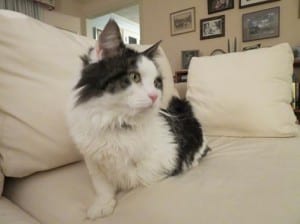Pets Get Allergies Too
The ARL shares 7 tips to help keep your pet’s allergies at bay this summer
Pet health and safety is on the Animal Rescue League of Boston’s (ARL) mind all year long– especially during the summer months when the heat and outdoor activities are at their peak. During our TOO HOT FOR SPOT ® campaign, we share advice on how to protect your pet in the warmer months. This week, we focus on a pesky condition that affects both humans and animals alike: allergies.

Is your pet showing allergy symptoms? A visit with your veterinarian can determine if your pet is suffering from airborne allergies.
Let’s face it; coping with airborne allergies is no fun for anyone. Pets with allergies develop a similar reaction to that of humans in that their immune system reacts to something that isn’t really a threat, such as tree pollen. Other typical airborne allergens include dander, dust, grasses, and mold spores.
As your cat or dog tries to rid their body of these allergens, a variety of symptoms may appear. Common symptoms of pets with allergies include: itchy and runny eyes, sneezing, snorting, snoring, increased scratching- especially of the ears, ear infections, and possibly diarrhea and vomiting.
While we can’t eliminate airborne allergens altogether, we can help keep our pet’s allergies at bay. The ARL shares 7 tips:
- Keep it clean. Wash your pet’s bedding and fabric toys in hot water and perfume-free detergent once a week. Frequently vacuum all materials in your home that trap dust (e.g., carpets, curtains, soafs).
- Close the windows to prevent allergens from coming into your home. Running an air filtration machine will also help trap sneaky airborne elements already in your home.
- Make bath time a weekly ritual. Allergens are easily trapped in your pet’s fur and a moisturizing oatmeal shampoo may help relieve dry, itchy skin. Remember to rinse off your pet’s paws when they come in from the outdoors.
- Keep your pet cool and dry. Avoid keeping your pet in rooms where the environment lends itself to excessive moisture and dust, such as damp basements, laundry rooms, garages, or barns.
- Feed fresh food. Store your pet’s food and snacks in airtight containers until mealtime to avoid allergens from being ingested.
- Avoid cedar chips in pet beds and your pet off treated wood decks and out of cedar dog houses.
- Visit the vet. Only your pet’s veterinarian will be able determine whether or not your pet is suffering from airborne allergies. Your vet may recommend an antihistamine (e.g., Benadryl) or an allergy injection to help your pet develop resistance to the offending allergen.
TOO HOT FOR SPOT! For more summer pet safety advice, visit arlboston.org/summersafety.


















